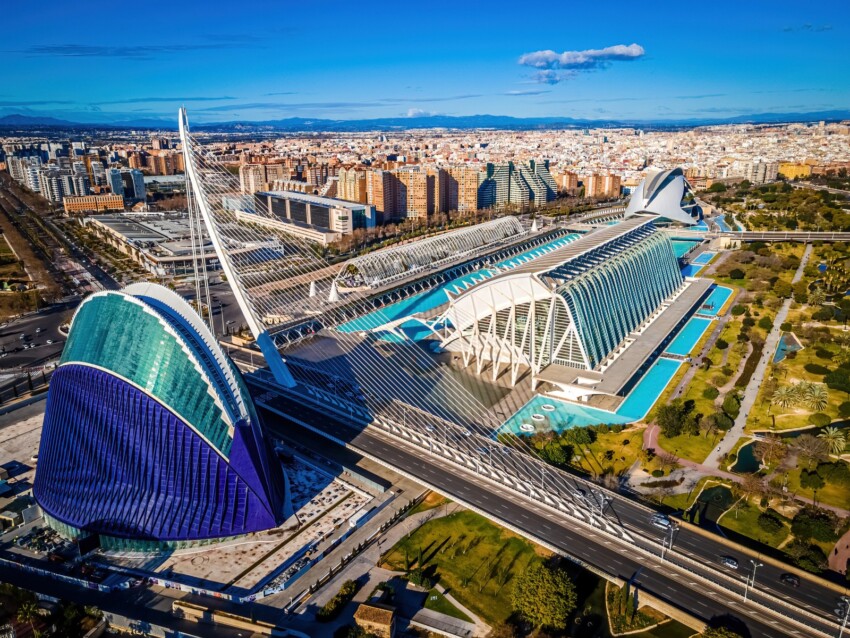
The symbol of Valencia is Ciudad de las Artes y las Ciencias (CAC), or City of Art and Sciences in English, a futuristic architectural complex of bizarrely shaped modern buildings dedicated to science and art. A city within a city, beautiful to see as a whole both by day and night, it becomes exciting when you enter inside the buildings and discover the wonders of the world we live in.
There are six main areas in the City of Arts and Sciences, three of which have fixed-price admission (Hemisfèric, Oceanogràfic and Science Museum), one with free admission (Umbracle) and two with paid admission that varies according to the events taking place (Palau de les Arts Reina Sofía and Ágora).
Never have the arts and sciences been as exciting as in this structure designed by the brilliant architect Santiago Calatrava, a native of Valencia, whose innovations and creativity have given the Valencian Community a unique work of art. A gift in a manner of speaking, given the enormous economic effort required to build this complex.
The CAC is two kilometres long, on an area that used to be the bed of the Turia river. Strolling through it, among tree-lined avenues, enormous water tanks and avant-garde buildings, is an experience not to be missed.
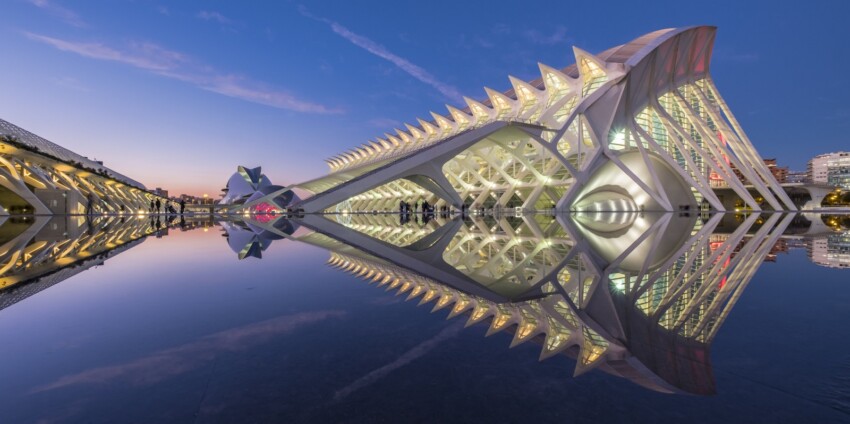
When scientific rigour meets fun, the result is an attraction not to be missed! We are talking about the Museu de les Ciències Princep Felipe, an interactive museum dedicated to science, technology and ecology.
The idea behind the museum is to disseminate knowledge and arouse curiosity through surprising exhibitions that engage visitors and stimulate them to interact.
Not only exhibitions, but also a full programme of activities and workshops for everyone, young and old: astronomical observations, courses, lectures and the not-to-be-missed animation programme in the ‘experimental classrooms’, which allows you to watch a live scientific experiment conducted in an entertaining manner like a play at the theatre!
In the museum’s exhibitions and workshops you will find answers to your most bizarre scientific curiosities, such as “how can you make a clock work with orange juice?” or “can you turn water into wine?”.
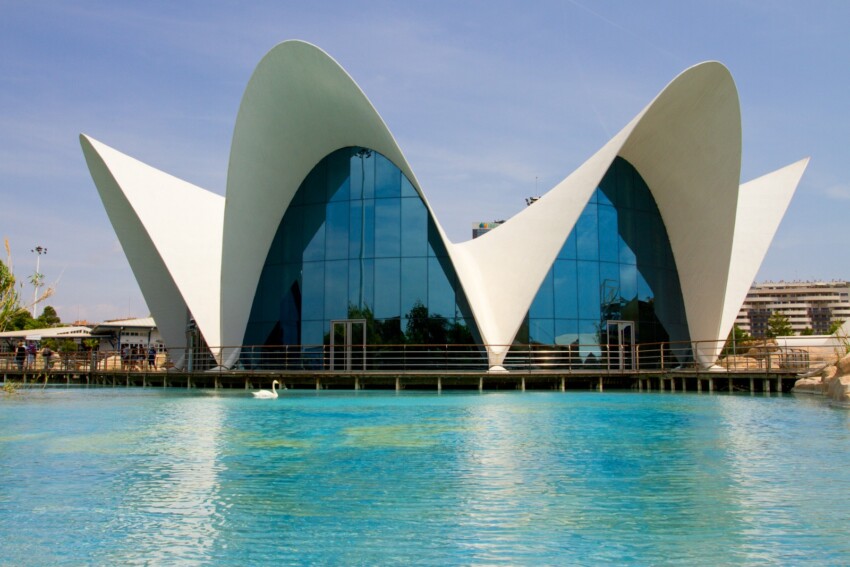
Another building of avant-garde architecture houses one of the largest and most spectacular aquariums in Europe, the CAC’s Oceanogràfic.
Step inside to discover the fascinating underwater world, or rather worlds: as many as six different marine ecosystems have been faithfully reproduced with their typical flora and fauna (Mediterranean, Marshes and Lagoons, Tropical Seas, Oceans, Antarctic, Atctic, Islands and Red Sea).
An entire area is occupied by the Dolphinarium, one of the largest in the world with 26 million cubic metres of water and a depth of 10.5 metres.
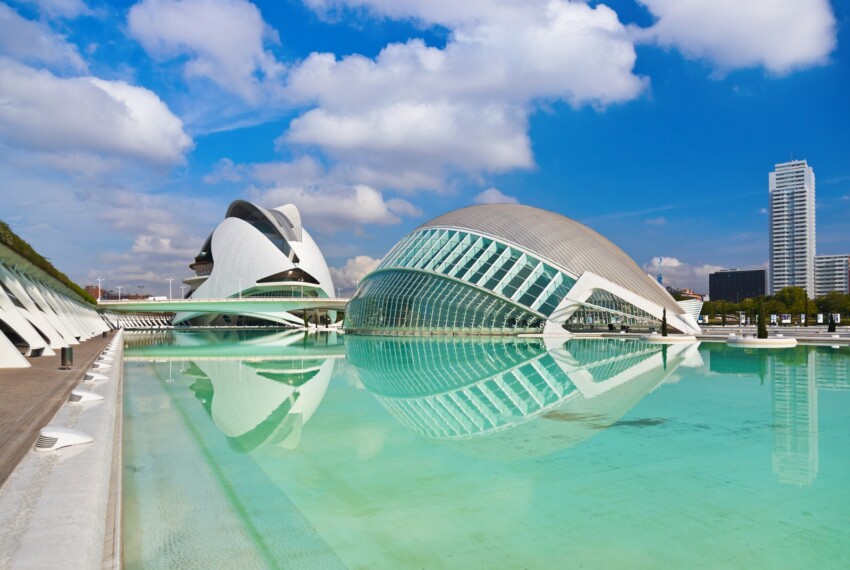
The first CAC building to be opened to the public, the Hemisfèric is perhaps one of the few cinemas in the world that excites the spectator as much for what can be seen outside as for the films that can be seen inside.
In other words, it is an extraordinary building, a singular eye-shaped palace that is meant to represent the eye of wisdom and knowledge.
With a surface area of 14,000 square metres and a capacity for thousands of people, it is the largest cinema in Spain and uses state-of-the-art projection systems that maximise the quality and spectacularity of reproduction, including IMAX and cine digital 3D. In addition to exciting nature documentaries, inside the Hemisfèric you can see a giant screen reproduction of the universe. Come in and see the world and galaxies as you have never seen them before!
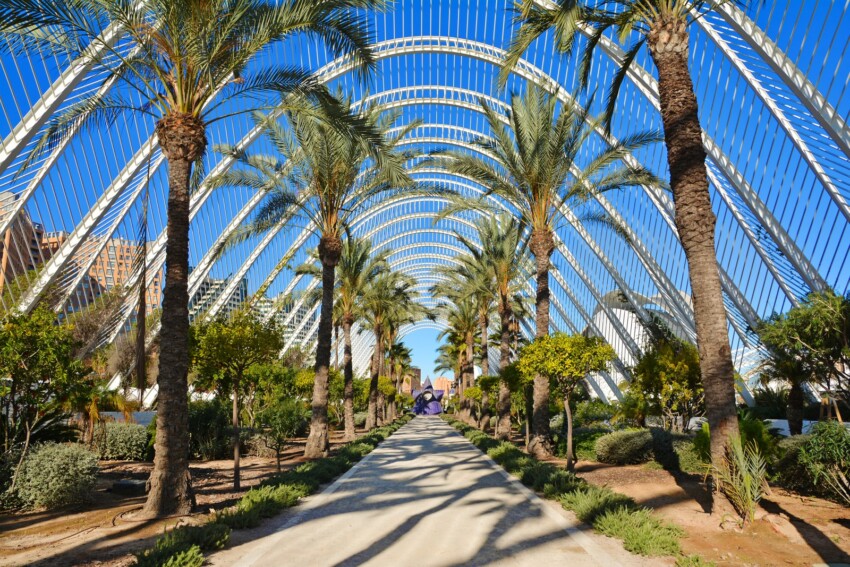
You can also come to the City of Arts and Sciences just for a relaxing walk, without having to pay an entrance fee, but of course since it is the CAC, don’t expect a ‘banal’ walk. What will astonish and excite you will already be the Umbracle, the monumental entrance portico to the complex, consisting of 55 fixed and 58 floating arches.
This pedestrian area, adorned with Mediterranean and tropical plants, is much more than a tree-lined avenue: it is a belvedere of more than 17,000 square metres that provides the best vantage point from which to admire the extraordinary buildings of the CAC.
The Umbracle area also includes the Paseo del Arte, a permanent exhibition of sculptures, and the Jardín de Astronomía, an interactive open-air exhibition that provides an entertaining insight into the basic concepts of astronomy.
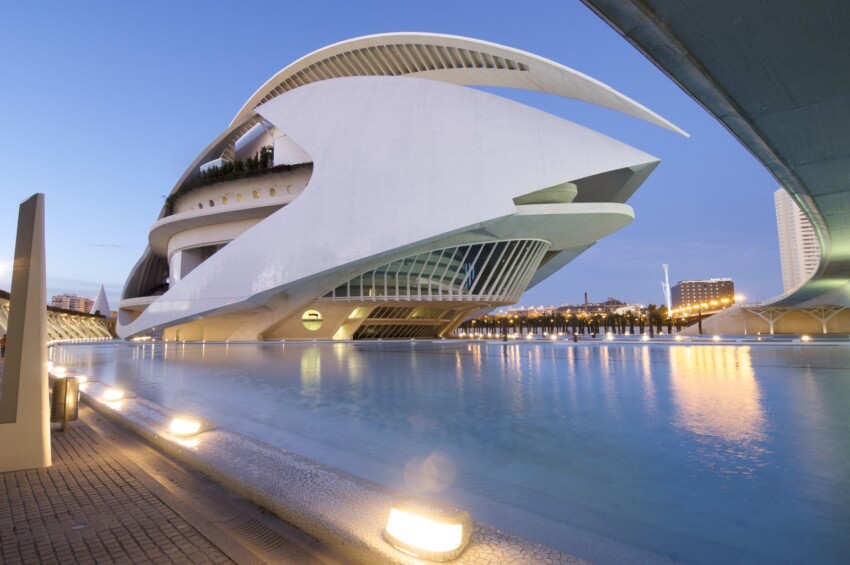
The most emblematic building of the CAC is the Palau de les Arts Reina Sofía, another extraordinary building of avant-garde architecture used as a concert hall and conceived to provide spectators with a musical experience of the highest level. With the inauguration of this palace, Valencia has carved out a leading role for itself in the international concert scene. It is divided into four halls (Sala Principal, Aula Magistral, Auditorio, Teatro Martin y Soler) with a total of 3600 seats.
A must-see for lovers of music, opera and dance, this building will excite even those who are not fans of shows with its majestic and innovative architecture and the context in which it is set: 87,000 square metres of gardens and 10,000 square metres of water pools surrounded by pedestrian paths.
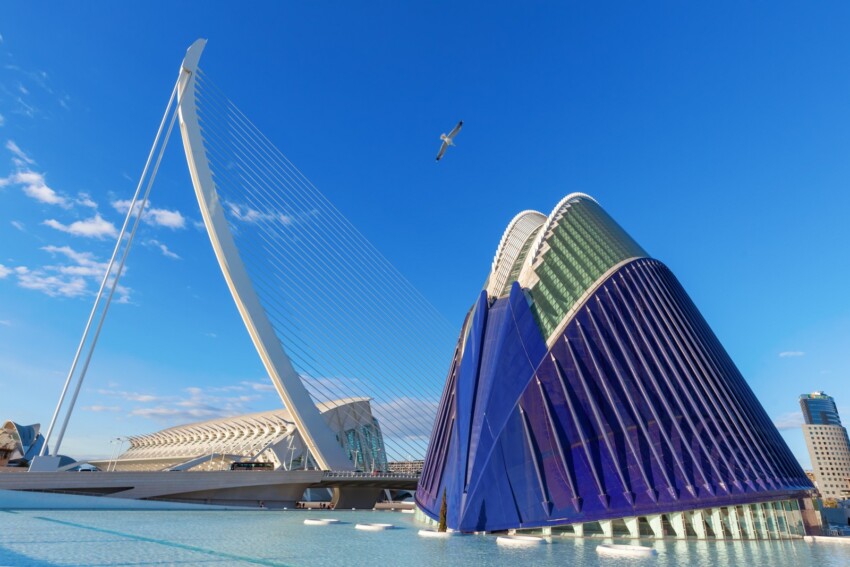
The Agora is conceived as a multifunctional space that can host a variety of cultural events and activities: extremely versatile, it can adapt to different purposes, such as conferences, theatre performances, concerts and more. The facility can accommodate a considerable number of people depending on the configuration of the event.
In the following map you can see the location of the main places of interest mentioned in this article.
If you are visiting Valencia for the first time, the Ciudad de las Artes y las Ciencias is a must-see. It is the city’s most visited attraction, so we recommend that you book your tickets in advance, whether you decide to visit just one museum, buying the corresponding ticket, or choose to visit them all with a combined ticket.
A visit to the CAC can last, depending on your interests and pace, a whole day! A visit to the Museum takes on average 3 hours, while for the Oceanogràfic you calculate 4 hours. The Hemisfèric cinema screenings last 45-50 minutes and you can listen to the audio in various languages with a headset.
As mentioned, the first solution is to buy only the individual entrance tickets of the attraction you will be visiting.
If you plan to visit more than one attraction at the City of Arts and Sciences, you can save money by purchasing a combined ticket that includes two of the Oceanogràfic, the Science Museum and the Hemisfèric, or all three!
Visiting all the attractions in the Ciudad de las Artes y las Ciencias comes at a significant cost, and if you plan to visit other museums and monuments in the city, your holiday budget could increase considerably.
One way to keep it under control is to buy the Valencia Tourist Card, which offers unlimited use of public transport and discounts at the main tourist attractions. The City of Arts and Sciences is one of the attractions promoted with the card.
The City of Arts and Sciences in Valencia is located slightly away from the city centre. There are no metro stations in its vicinity, so this public transport option should be discarded.
However, it is convenient to use tram number 10, which stops in front of the Pont l’Assut de l’Or, between the Umbracle and the CaixaForum. The stop is called Ciutat Arts i Ciències – Justícia. The tram departs from the centre at the Alacant stop, located between the Plaza de Toros and the Valencia train station, along Carrer d’Alacant, and in less than 15 minutes takes you to your destination.
There are also several bus lines that serve the City of Arts and Sciences: lines 13, 23, 24, 25 and 95 stop at the Alcalde Reig – Museu Faller stop, located at the northern end of the Ciudad; bus 99 stops at the Actor Antoni Ferrandis (par) – Centre Comercial stop, located opposite the tram; and line L191 stops along Avenida del Professor Lopez Pinero.
Sleeping near the City of Arts and Sciences in Valencia is not a problem: since its inauguration, hotels have been built around it, and later many flat owners converted their accommodation into residences for tourists. Both on the north side of the Turia gardens and on the south side, which is where the buildings that make up the City are actually located, there are various accommodations, starting with some 3- or 4-star hotels of the large Spanish and international chains, such as NH, Sercotel, Melià, Marriot and Barcelò.
Next to them, especially on the southern side of the Turia gardens (which, we repeat, is the one overlooked by the City of Arts and Sciences) you can choose from a range of flats, rented houses and bed and breakfasts. The choice is very wide, so decide mainly according to your budget.
Born in Valencia in 1951 and now a naturalised Swiss citizen, Santiago Calatrava is certainly the most famous Valencian in the world. A brilliant architect and engineer, he is the author of iconic works all over the world including the Olympic Games complex in Athens, the new bridge in Venice, the Oriente station in Lisbon, the Torre de Telecomunicaciones de Montjuïc in Barcelona and the Samuel Becket bridge in Dublin.
He is often referred to as the creator of the City of Arts and Sciences because he was responsible for the designs of the most emblematic buildings, namely the Palau de les Arts Reina Sofía, the Hemisfèric, the Museu de les Ciències, the Umbracle and Àgora, while the Oceanarium was designed by architect Félix Candela.
Often at the centre of heated controversy for the exorbitant cost of his works, considered by many to be excessive, and for structural errors bordering on the absurd, Calatrava undoubtedly remains a true archistar who has introduced creativity and innovation into contemporary architecture.
The Ciudad de les Artes y las Ciencias is located southeast of the city centre, lying on the south side of the Turia gardens. It is located approximately equidistant between the centre and the port of Valencia.
City Card allow you to save on public transport and / or on the entrances to the main tourist attractions.
